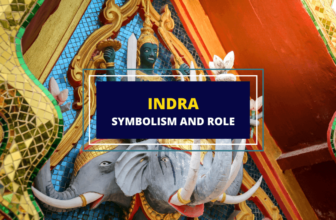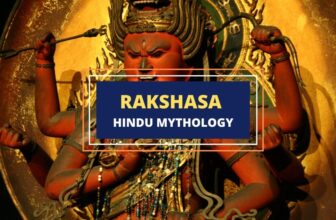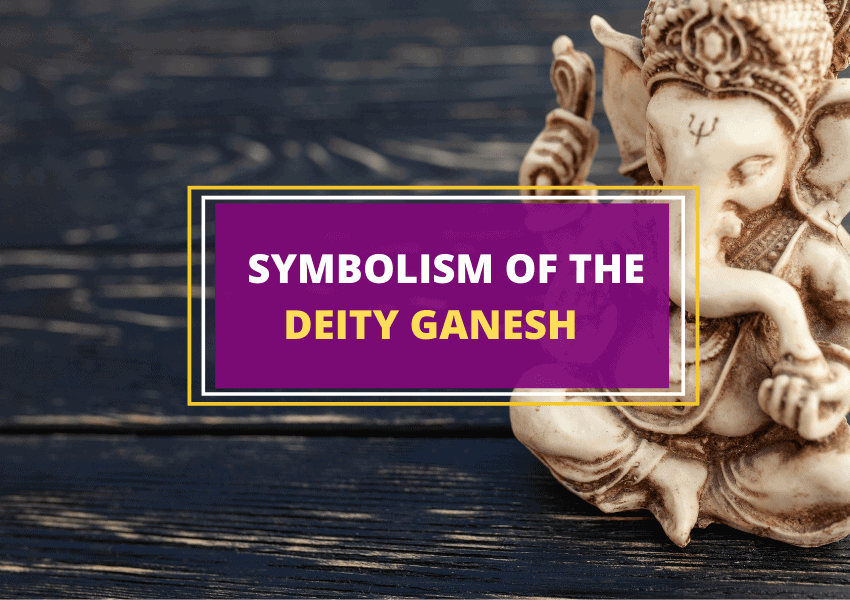
Table of Contents
One of the most popular and highly revered deities in Hinduism, Ganesh has the head of an elephant and the body of a man. Keep on reading to know more about the origin, cultural associations, and significance of Lord Ganesh today.
History of Ganesh
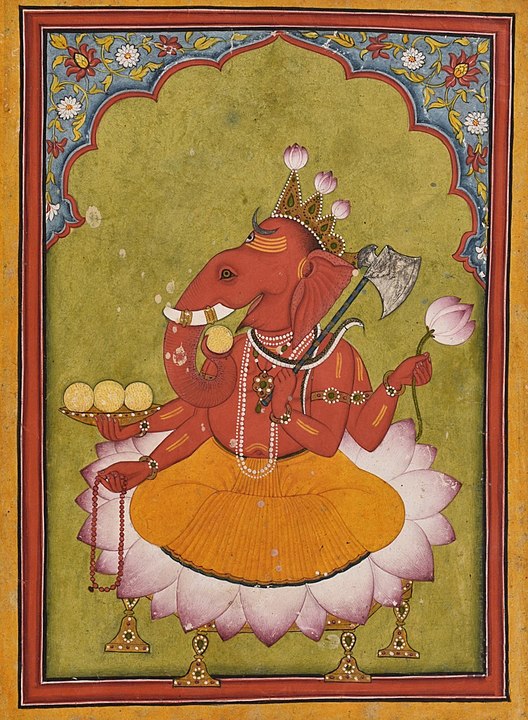
In Hinduism, Ganesh is the deity of beginnings and the remover of obstacles. He is the son of Shiva and Parvati, and worshipped as the god of wisdom, prosperity, arts, and sciences. In Indian history, he became popular during the Gupta Period, between 320 and 550 C.E. In fact, the earliest cult image of him is found at the Bhumara Temple in India, which has been dated to the 4th century.
The name Ganesh is derived from Sanskrit terms gana, which means a group or the common people and isha, which means lord or master. When translated, Ganesh means Lord of the People or Lord of the Group. In Hinduism, there are about 108 names derived from the Sanskrit language dedicated to him, such as Ganesha, Ganapati, Vignharta, Lambodara, and Ekadanta to name a few.
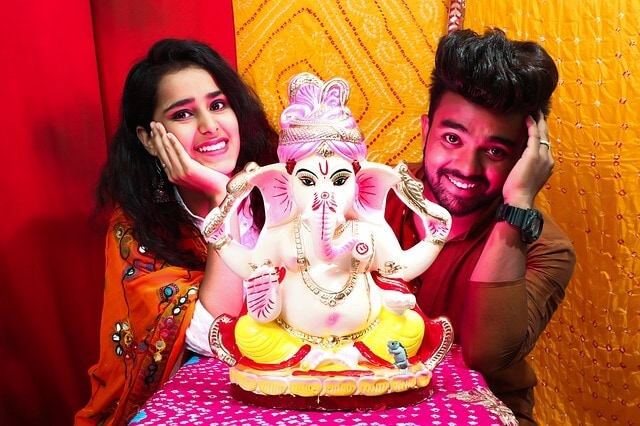
Why Does Ganesh Have an Elephant Head?
There are many stories about the birth of Ganesh, and one of the most popular is the myth about his elephant head. When Shiva was away in the forest, the goddess Parvati created the form of a boy out of turmeric paste and gave it life. She then instructed the boy to keep guard and prevent anyone from entering the chamber where she bathed.
The young boy Ganesh became the constant companion of his mother. When Shiva returned home, he went to his wife’s chamber. Unfortunately, the boy refused to let him in, so Shiva beheaded him out of anger.
Angered for what her husband did, Parvati made him promise to bring Ganesh back to life. Shiva ordered his attendants to find a new head for the boy by bringing the head of the first living creature they encountered, which happened to be an elephant’s head.
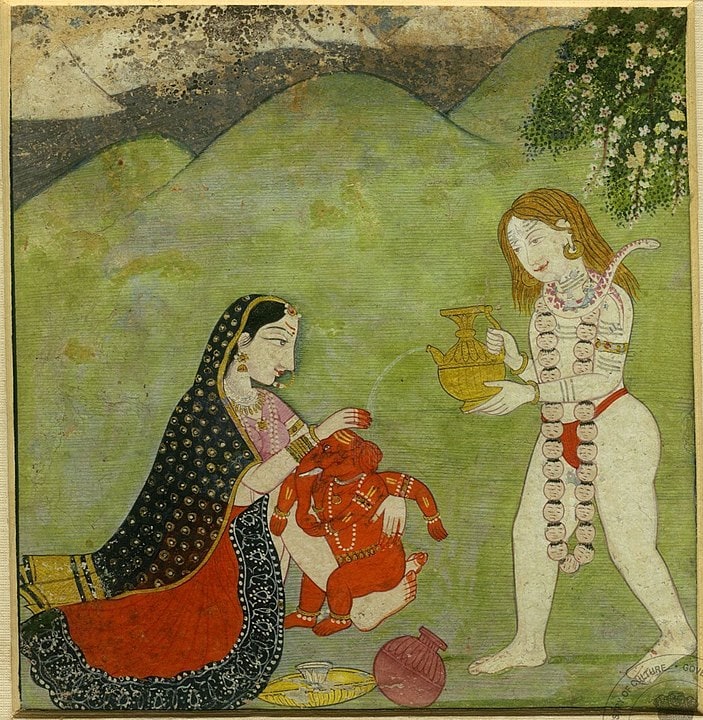
Shiva placed it on Ganesh’s shoulders for him to come back to life. As soon as he had regained his consciousness, Shiva adopted him as his son, naming him Ganapati.
Why Is Ganesh Depicted with a Rat?
The deity is often portrayed riding on a rat or a small rodent. This features was first introduced in the Sanskrit literature Matsya Purana, and eventually was depicted in statues of Ganesh during the 7th century C.E. Some scholars believe that the rat represents the deity’s power of removing obstacles, since rodents are commonly regarded as destructive creatures.
In different interpretations, the rat represents the mind, ego, and desires that need to be controlled in order to gain Ganesha’s consciousness. Some also believe that the juxtaposition of the elephant head and the mouse on iconography represents equality – the large and important with the small.
Why Is Ganesh Portrayed with a Pot Belly?
Most of the time, the deity is depicted holding a few sweets. His round belly is symbolic to Hinduism. The Sanskrit text Brahmanda Purana says that all the universes are stored in Ganesh, including the seven oceans and the seven realms above and below. All of these are held by kundalini, a divine energy located at the base of the spine.
Ganesh Charms in Feng Shui
While most feng shui charms are based on Chinese culture and mythologies, the practice highlights the importance of good energy, which isn’t bounded by religious and cultural symbols. Ganesh has an elephant head—and the elephant symbol itself is popular in feng shui as a cure for fertility, wisdom, wealth and good luck.
Meaning and Symbolism of Ganesh
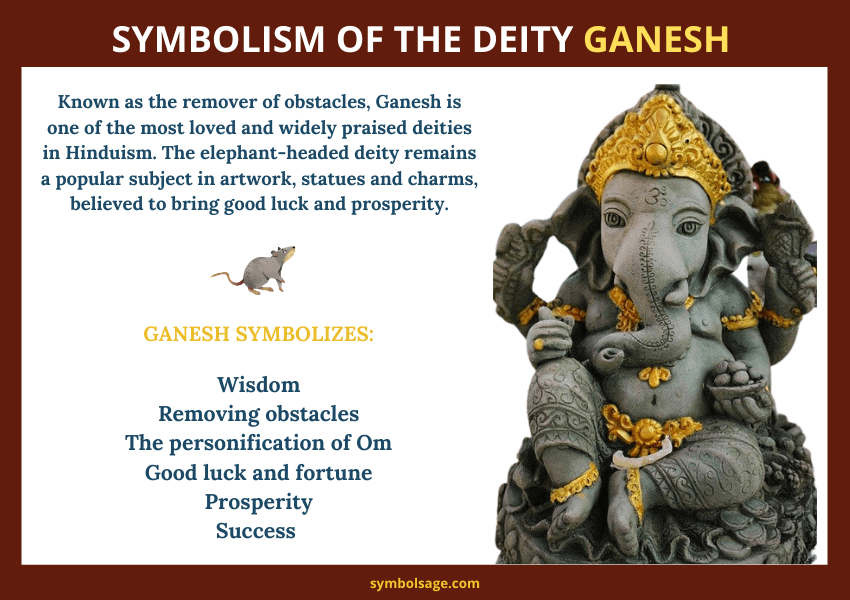
In Hinduism, Ganesh is associated with several symbolic interpretations. Here are some of them:
- A Symbol of Wisdom – Ganesh is regarded as the god of intelligence, or Buddhi, and many believe that he wrote the Hindu epic The Mahabharata. No wonder he’s also the god of writers and many seek his guidance before starting a writing project.
- The Remover of Obstacles – His Sanskrit name Vighnaharta translates as the obstacle destroyer. The depiction of him riding on a mouse represents his ability to take away obstacles, suffering and pain from his worshippers.
- The Personification of Om or Aum – The syllable is regarded the sacred sound or mantra in Hinduism, and the Sanskrit text Ganapati Atharvashirsa describes the deity as the embodiment of it. In the Tamil and Devanagari writing system, some claim there’s a resemblance of Om with Ganesh’s iconography.
- A Symbol of Good Luck – In Hinduism, Ganesh is believed to be the bearer of good fortune and the one who gives blessings. During the 10th century, Ganesh became known to merchants outside India as a result of commercial ventures and trading. The traders and travelers had began worshipping him, and he became one of the most popular Hindu gods associated with good luck.
- The Symbol of Success and Prosperity – Ganesh is the god Hindus seek guidance from whenever starting a project or business transaction, as they believe the deity will provide wealth and success in any endeavor they take.
Ganesh Symbol in Modern Times
Ganesh is deeply loved by Hindus around the globe, and also appears in Buddhism and Jainism. He’s the highlight of summer festivals in India, particularly in New Delhi, Mumbai, Maharashtra, and Pune. The Ganesh Chaturthi is a festival celebrating his birthday, and commonly held between August and September.
Hinduism is a polytheistic religion, and each day of the week is devoted to a certain deity. Typically, every Hindu home in India dedicates an altar for Ganesh, who’s commonly worshiped on Tuesdays and Fridays, and scriptures such as Ganapati Atharvashirsa and Ganesha Purana are used to honor him, along with prayers, meditation, mantra chanting, cleansing rituals, lighting candles, and offerings.
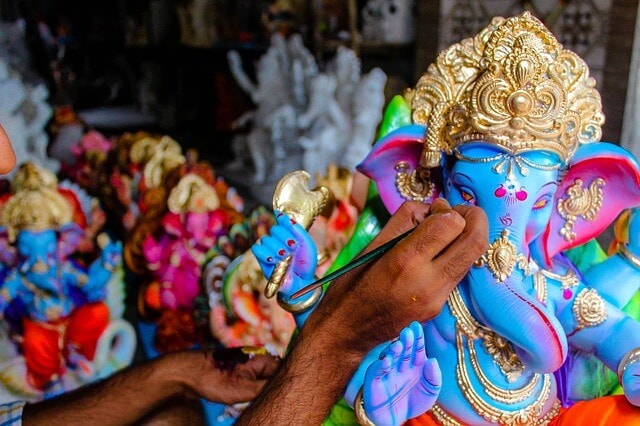
Also, Ganesh icons and statues are common in Hindu homes and workplaces, and believed to represent his spiritual essence. Some statues are made of hand-carved wood, depicting the deity in different postures, such as riding a rat, playing a musical instrument, and holding a bowl of sweet delicacies. Other figurines are made of copper, jade, onyx, ivory, and even resin.
There are also some Ganesh idols made of turmeric and turmeric water, since the spice itself has a spiritual significance in Hinduism, and even called the spice of life. In jewelry, religious medals, necklace pendants, and medallions commonly feature the deity. Some are crafted from precious metals such as silver and gold, and decorated with gemstones.
Below is a list of the editor’s top picks featuring the lord Ganesh.
In Brief
Known as the remover of obstacles, Ganesh is one of the most loved and widely praised deities in Hinduism. The elephant-headed god remains a popular subject in artwork, paintings, and sculptures all over the globe, as well as in statues and charms, which are believed to bring good luck, wealth, and prosperity.








